Astronomy
Updated: Monday, 13-Sep-1999 21:36:46 CDT
No, not astrology, astronomy. The real science. If you believe in
astrology then you've likely sustained a severe blow to the head in which
case you're probably seeing stars too.
Comet Hale-Bopp
If you were impressed by Comet Hyakutake you should be interested in Comet
Hale-Bopp. Discovered in 1995, it's already promising to be better than
Hyakutake. With a current magnitude reaching the brightest stars in the
sky, Hale-Bopp will be easily visible with the naked eye. The length of the
tail is approaching the same amount of sky that the sun sweeps every hour,
although this wouldn't be fully visible without binoculars or a time exposed
photograph. The best times for viewing should be late February/early
March in the dawn sky, and late March/early April in the evening sky.
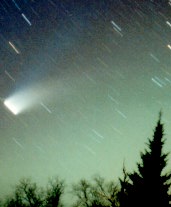 |
Here's a time exposure of Hale-Bopp I took March 28, 1997. I used 200
ASA print film and a 43mm f/3.5 lens. Exposure time was about ten
minutes. Clearly visible is the dust tail on the right, and the ion tail
can just be made out on the left. |

| Venerable old Luna. Did you know that the Moon is
one of the largest moons in our solar system? It's even larger than
the so-called planet Pluto! Many urbanites don't realize just how
much light a full moon puts out (it can cast shadows). If you have a
decent pair of binoculars you can explore features you've probably never
realized were there.
|
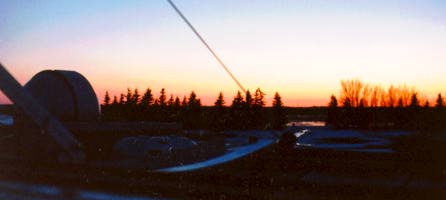
| Glenlea Astronomical Observatory The University of Manitoba has
an observatory about fifteen minutes drive south of the city.
|
Sporting an 18" telescope (Nasmyth style) recent modernizations have come in
the form of CCD cameras being attached to the eyepiece. A CCD camera, or
charge-coupled device, is an electronic instrument which has many times the
light sensitivity of your eye and enables astronomers to look farther into
the heavens. This picture was taken from the Royal Astronomical Society of
Canada's dome, just across the way. Not as splendiferous, it's more than
adequate for the amateur astronomy and sports a 14" telescope
(Schmidt-Cassegrein?).
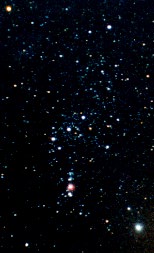 |
The constellation Orion on the left, and M42, the Orion
Nebula on the right. The nebula is often mistaken for a star in
Orion's sheath, although observation with binoculars shows the middle "star"
to be a glowing blob. The constellation picture was 200 ASA film with a
43mm f/3.5 lens piggybacked for ten minutes on a small telescope. The
nebula picture was taken from the RASC dome. It's a fifteen minute
exposure on 1600 ASA film with a 400mm f/8 lens and camera piggybacked on
the RASC telescope. There's treasure everywhere!
| 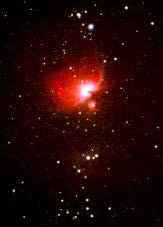
|
To learn more about astronomy you can visit:

 Return to my homepage.
Return to my homepage.

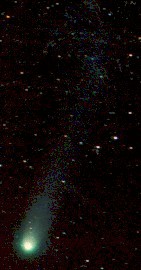
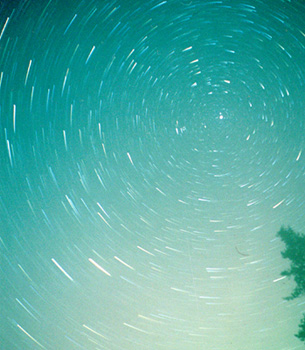





 NASA's Jet Propulsion Laboratory
NASA's Jet Propulsion Laboratory Nine Planets Tour of the Solar System
Nine Planets Tour of the Solar System
 Return to my homepage.
Return to my homepage.